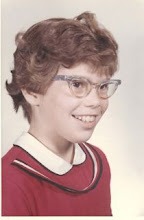Please join me in welcoming today's guest blogger, Sara Ralph, who has been an elementary school librarian for eleven years. She has always loved reading and is dedicated to making sure her students and three daughters do, too. She has a blog and you can find her on Twitter.
A Right Book for Every Reader
It seems simple, right? However, in the educational world of Common Core, grade level text, exemplar titles, close reading, Lexile levels, and Accelerated Reader/Reading Counts programs, students having the freedom to read what they want to read at school is something that is in danger. It is up to educators to preserve it. What does freedom to read look like in my elementary school library?
Picture books are for everyone. The first thing I did was change “Easy Fiction” to “Everyone.” I read picture books to all students, and they know I love picture books. I wanted to undo the idea that students outgrow picture books.
Taking risks is encouraged. Say a third grader who reads below grade level comes in and checks out Harry Potter. In terms of “just right books,” this is a poor choice. However, it is important that we allow students take risks as readers. Telling someone they can’t read a particular book is a terrible thing to do to a child because all they hear is “You can’t read.”
Thank you Sara for sharing your insight and for all the wonderful work you do getting kids to love reading! And to repeat the information from Tuesday's post, First Book might be an additional resource for you in terms of adding to your library collection. Here's my Author in Action link! Also, check out the Target Early Childhood Reading grants.






Thank you, Sara, for encouraging your readers! Early on, my daughter had a librarian who said "no," but a teacher who said, "yes!" and slipped a book in her cubby with a note: "I saw this book and thought of you." That little note, that yes, made all the difference.
ReplyDeleteThank you for this post. Choice, choice, choice. That's what matters in reading.
ReplyDeleteLoved your post, Sara, and agree with everything you wrote! Your students are very lucky to have you :) Tanja
ReplyDelete(And btw - I also have an Everyone section in our Primary library.)